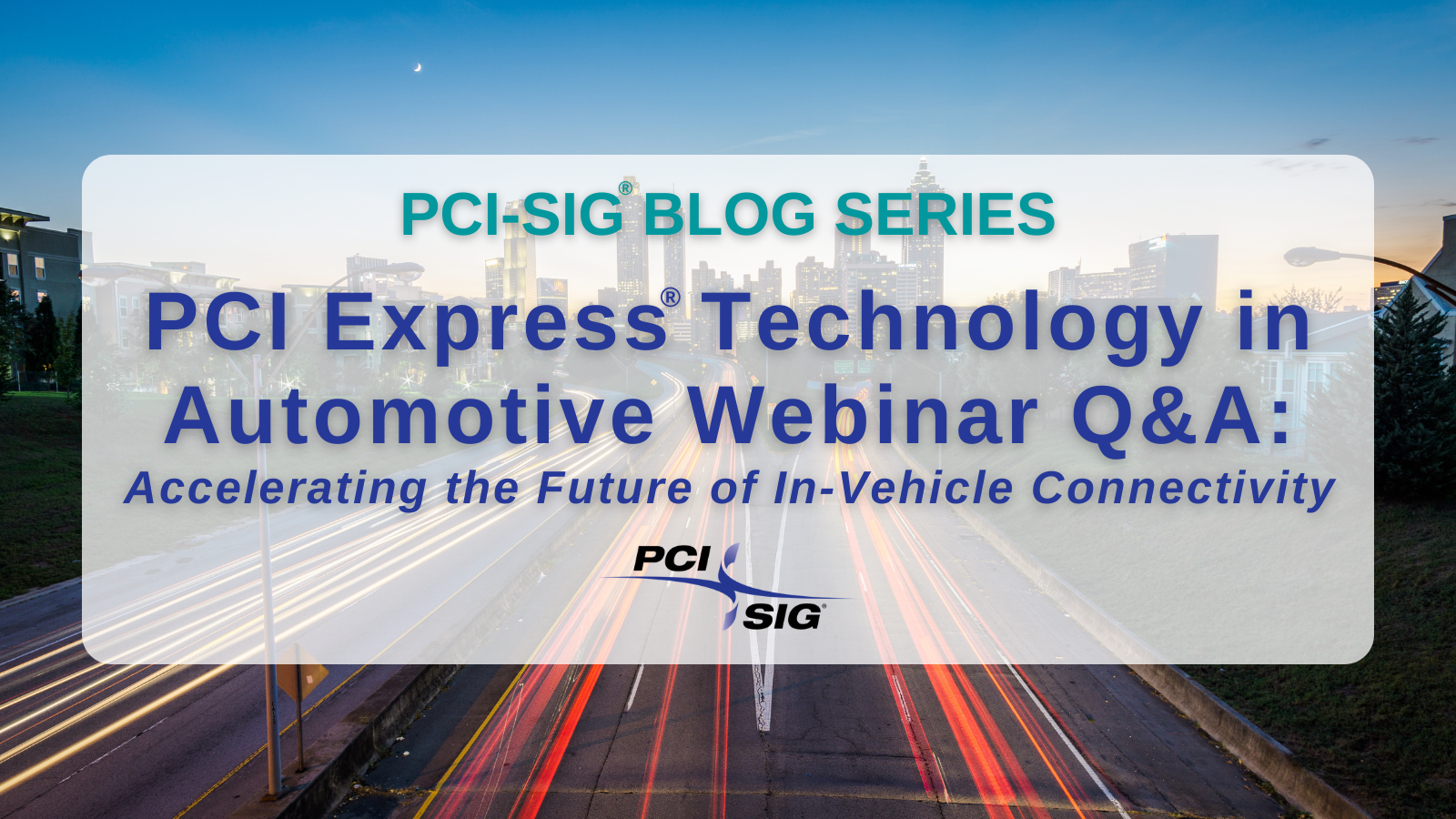Latest Posts

Networking devices provide an essential role in facilitating communication between computers and internet networks.
- PCI Express Specification
- Data Centers
- PCI Express
- PCI-SIG
- PCIe
- PCIe Specification
- PCIe Technology
- Servers
- PAM4
- Networking

With the emergence of autonomous vehicles, AI-based advanced driver assistance systems (ADAS) and in-vehicle infotainment (IVI), today’s automobiles are becoming high-tech “servers on wheels.” PCI Express® (PCIe®) technology is expanding to become the interconnect of choice in automotive applicat
- Systems & Applications
- automotive
- PCIe
- PCI Express
- PCIe Retimer
- PCIe connectivity
- PCIe CEM
- PCIe Security
- PCIe low power
- PCI-SIG Automotive Taskforce.
PCI Express® (PCIe®) technology is the most important high-speed serial bus in servers. Due to its high bandwidth and low latency characteristics, PCI Express architecture is widely used in various server interconnect scenarios, such as:
- Signal Integrity
- PCIe 5.0
- PCI Express 5.0
- PCIe CEM
- PCIe Channel Loss
PCI-SIG® has enabled PCI Express® (PCIe®) technology to be cost-effective and easy to implement by supporting multiple form factors for a variety of applications.
- Physical Form Factors
- PCIe 5.0
- PCI Express 5.0
- PCIe CEM
- PCIe Card Electromechanical Connector
PCI-SIG® is proud to announce that we have established a working relationship with DMTF to simplify hardware management.
- Standards & Compliance
- PCIe
- PCI Express
- PCI-SIG
- DMTF
- Redfish
- PCIe Security
PCI Express (PCIe®) has been widely adopted in a number of applications that range from small, power-constrained IoT sensors and mobile devices to servers and networking and communications equipment.
- Physical Form Factors
- M.2
- U.2
- CEM
- Networking
- Form Factor
